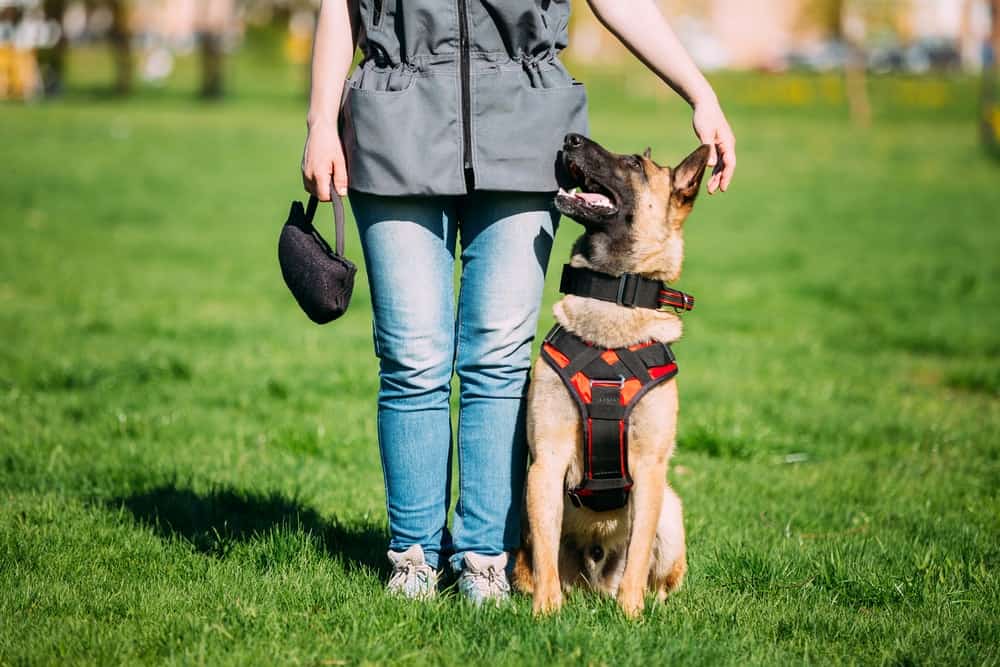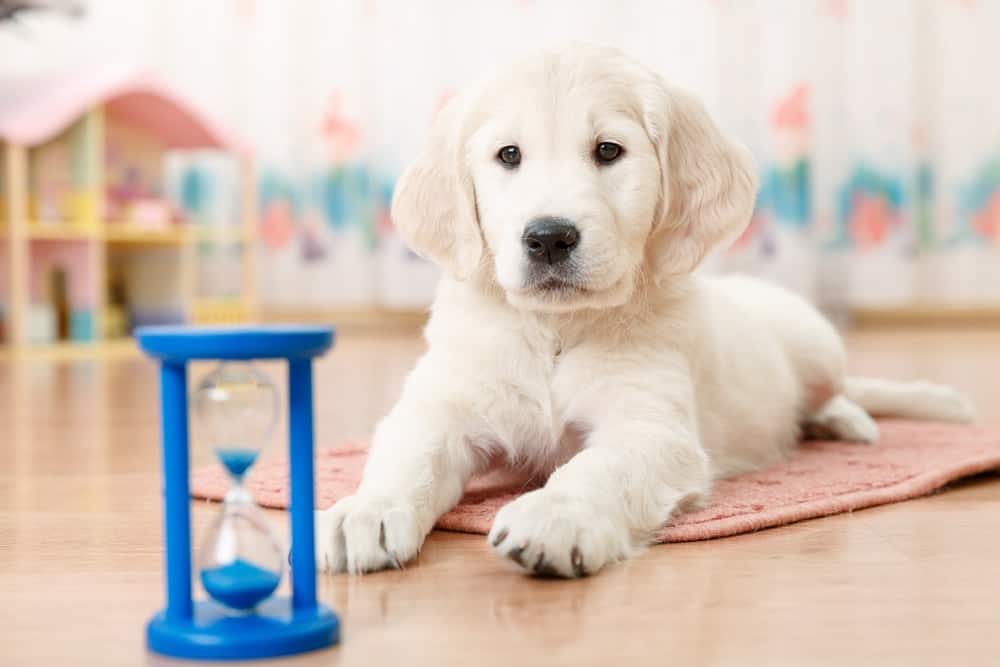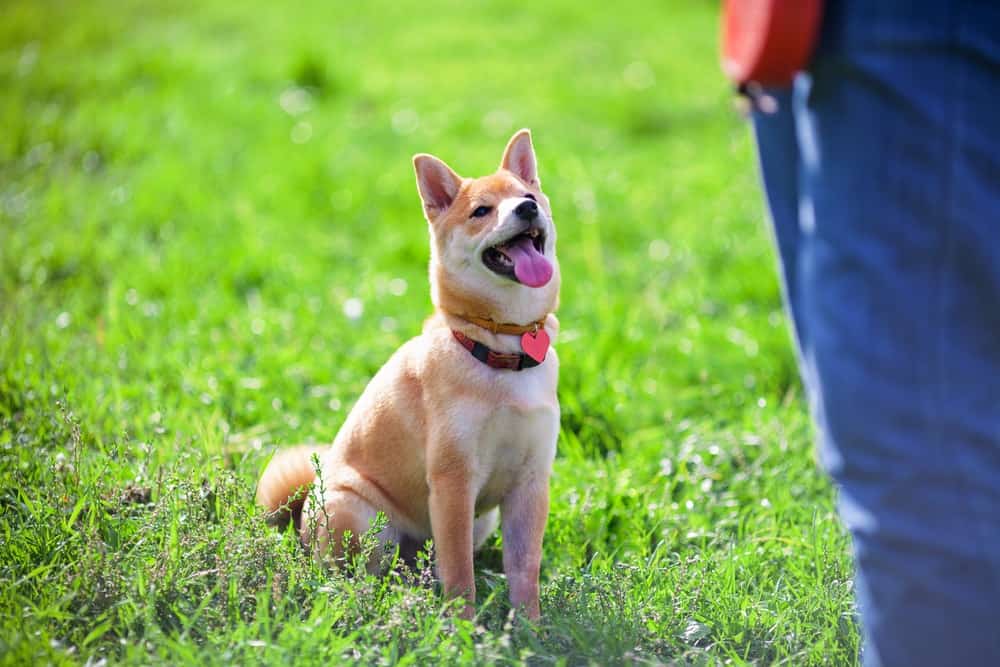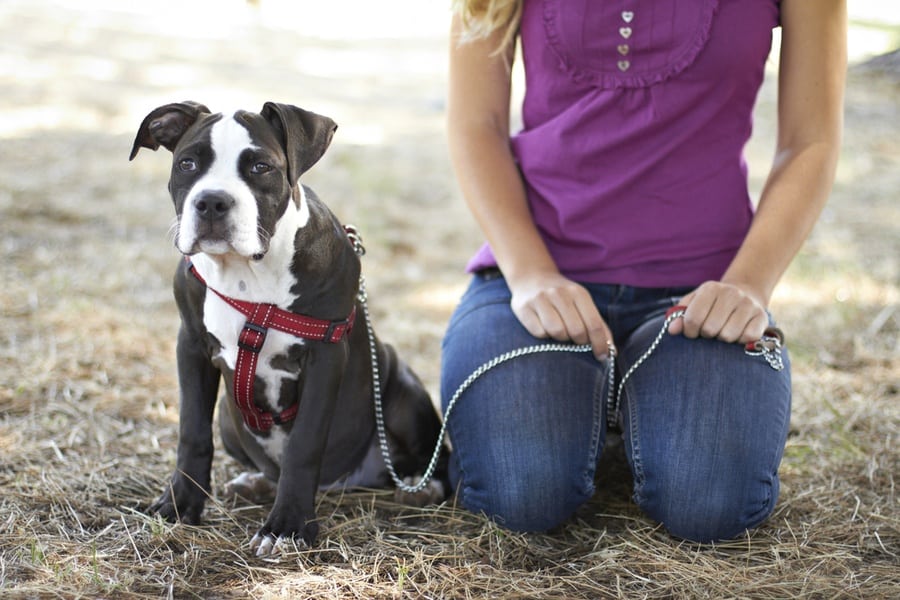“This post contains affiliate links, and I will be compensated if you make a purchase after clicking on my links.”
When it comes to training dogs, these 10 rules that every pet parent should follow will ensure your dogs will be safe, happy, healthy, and well-behaved.

While there are dozens of methods, techniques, and schools of thought regarding how to best train your dog, there are some rules of dog training and pet ownership that every trainer can agree on. Follow these 10 commandments of dog training to ensure you raise a dog that’s not just well-behaved, but happy, healthy, and kept safe, too.
1. Always train with kindness and love. Remember that your dog is a sentient being, capable of feeling love and pain, happiness and sadness. Training with kindness and love instead of force, punishment, and fear will allow your dog to behave and perform cues because he wants to instead of performing for fear of being punished.
2. Be patient. Whether you’re just getting started or working on complex behaviors, your dog is going to make mistakes. Whoever said “patience is a virtue” very well could have been talking about dog training! If, during training, you find yourself (or your dog) becoming frustrated, take a break. Training is a marathon, not a sprint – no need to rush through it!
3. Learn to communicate with your dog. Although dogs don’t speak in the same way humans do, they DO communicate in a way that’s easy to understand – if you know how. Understanding your dog’s body language is absolutely essential, not only in training, but in raising a happy, healthy pup. To better understand the subtleties of your dog’s unique language, check out these fantastic illustrative books on the subject: The Dog Body Language Phrasebook and How to Speak Dog: Mastering the Art of Dog-Human Communication.
4. Be consistent. Consistency is absolutely essential in training a well-behaved dog. Be clear and consistent in the rules you want your dog to follow and make sure everyone in the home follows those same rules. For example, if you don’t want your dog to beg at the dinner table, make sure no one in the home slips him food from their plate. Inconsistency is confusing for your dog.
5. Teach your dog to have good manners. Appropriate behavior from your dog is important, not just for keeping order at home, but for the safety, comfort, and life of other people and animals you may encounter outside the home. Training your dog not to bark excessively, jump on visitors, chase animals, drag you down the street during walks, and similar unwelcomed behaviors are just as important as training fun tricks at home.
6. Don’t do too much, too soon. When training your dog, it’s important to set the stage for success. That means allowing your dog to learn and grow at a pace that’s comfortable and successful and taking your time to advance to tougher behaviors. In dog training, you’ll often hear the term, “the three D’s.” This refers to distance, duration, and distractions – all factors to consider when training your dog at an appropriate pace. Slowly increase your distance from your dog as he learns to respond to cues, slowly expect your dog to remain in position for longer duration, and gradually increase the number of distractions present during training, only advancing each of these factors once your dog has proven successful.

7. Keep training sessions short and sweet. Pet parents who spend short 5 to 10 minute training sessions with their dog a few times a day will make much greater progress than those that try to train for a solid hour or more each day. While it isn’t often physically demanding, training is mentally exhausting for your dog. A tired, overworked, or uninterested dog will not learn as quickly and efficiently as a dog that’s well-rested and excited to learn.
8. Reward your dog’s successes. Because dogs generally repeat actions that are successful for them, reward-based training is a proven method for teaching the behavior you expect and desire of your dog. Although one of the most valued rewards you can give your dog is a tasty dog treat, rewards can come in the form of praise, affection, or playtime with a favorite toy, too. Just be sure your rewards are given in response to good behavior and not used as a bribe to elicit the behavior you want.
9. Train in a variety of environments. Because dogs don’t generalize well, it’s important to have training sessions in a variety of different environments. You may have mastered the sit cue in your living room, but find your dog baffled when you ask him to sit in the back yard. A great way to help your dog learn that your cues should be followed no matter where you’re at is to clip a treat pouch to your waist, a leash to your dog’s collar, and have a series of mini training sessions. Start indoors, head to another room of the house, walk into the back yard, then take a short walk around the neighborhood, taking time to stop and practice cues and commands in each location.

10. Keep training fun! One of the most important things to remember when training your dog is to keep it fun! As long as you and your dog are happy, enjoying your time together, and making progress, you’re doing it right! If you find that your dog seems uninterested in training, think of creative ways to make it fun for him. Choose higher value rewards, like freeze-dried meaty treats instead of boring old biscuits or end training sessions with a fun game of fetch or a walk to the park. Make sure you’re having fun, too! Your dog will sense your level of excitement and feed off of it. A happy dog that’s having fun will not only learn faster, but will look forward to your next training session together, too.




















Andrea
Dec 30, 2020 at 4:11 pm
I recently found a dog, tried everything to find owner, no luck. I decided to keep him and make him a member of my family ( l have two other dog’s. Jax is a pit/Shepard mix and a year and a half, he will be neutered on January 7th. My two biggest problems is that he likes to bolt out and run away. He is smart and follows some commands, l cannot walk him yet he is too hyper and strong.
Tammie Houston
Nov 4, 2019 at 4:08 pm
I like that you said that understanding the dog’s body language is essential in raising a healthy, happy and well-trained pup. My daughter recently adopted a dog from her classmate and she is thinking of having it trained with appropriate behavior and good manners. I guess we need to look for a specialist to train the dog and make sure that we have control over his behavior.
Larry Weaver
Oct 30, 2019 at 3:20 pm
Thanks for the tips on training dogs. I wonder if the same tips could be used on more exotic animals. I am shooting a short film and will need to use some exotic animals for a scene, and it might be best to find a service that works with trained animals.
Ty The Dog Guy
Oct 23, 2019 at 7:10 am
Great Post I Read all Commands of Dog Training and really enjoy it wonderfully. Thank you for Posting.
Martin Smith
Sep 27, 2019 at 11:22 am
Brandy,
Awesome article, I just started learning how to train my dog, properly as should say, after 5 years, and what you describe in your article is what I am learning at my dog training sessions that I attend each week. One of your points,is to train with my dog for no more than 15 min different sessions throughout the day. One thing I also learned was that because of my lack of experience in dog training, my dog’s sees me below him and thus do what he pleases..So now I have to pay the price and be consistent with his training.
Cynthea Aynsley
Aug 16, 2019 at 12:03 am
GREAT ARTICLE! I have seen new owners struggle with their dogs but now I can refer them to this article and breathe a sigh of relief!!!!
Mindy Jollie
Jul 29, 2019 at 6:26 pm
I like what you said about making sure to reward your dog’s successes. My husband and I are thinking about getting another dog and we want to make sure we maintain control over its obedience. We’ll have to see if working with a dog trainer is the right option for us.